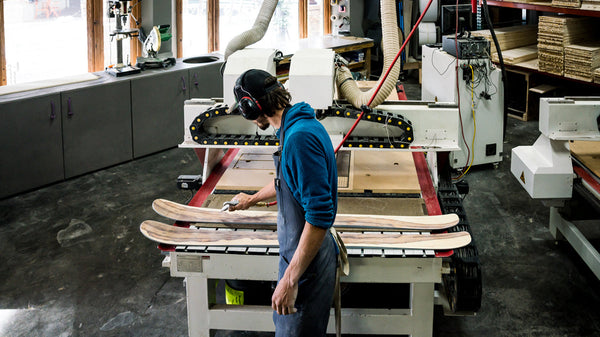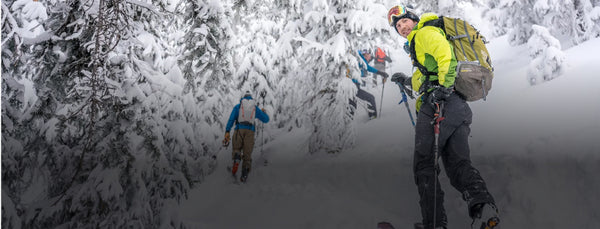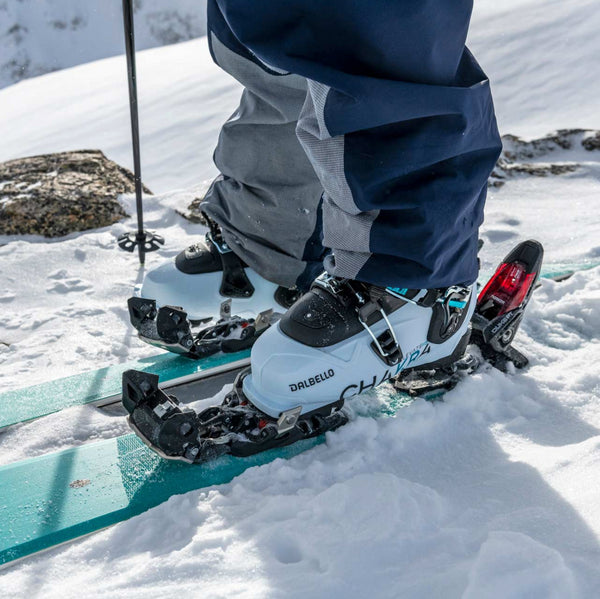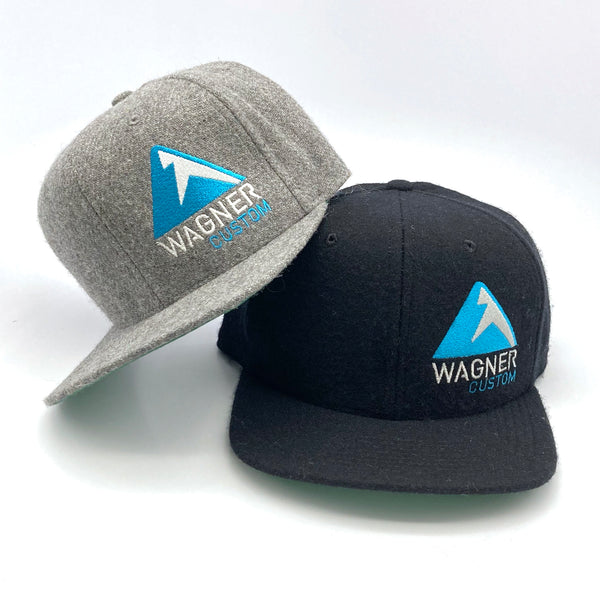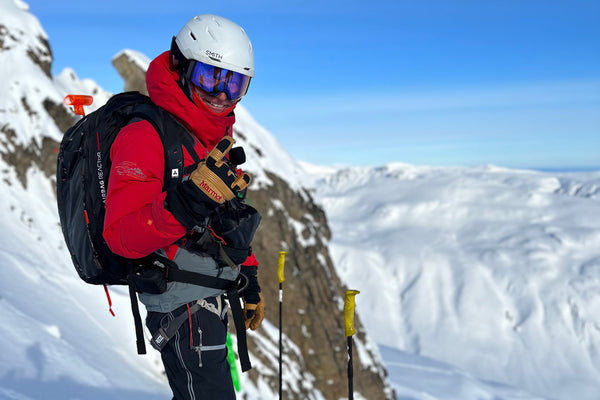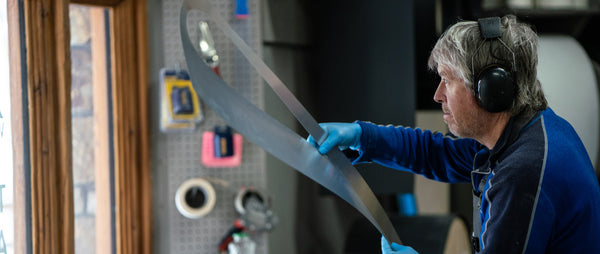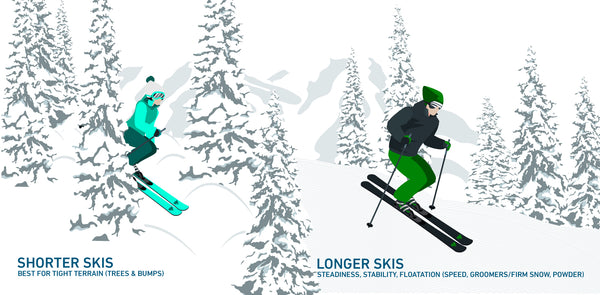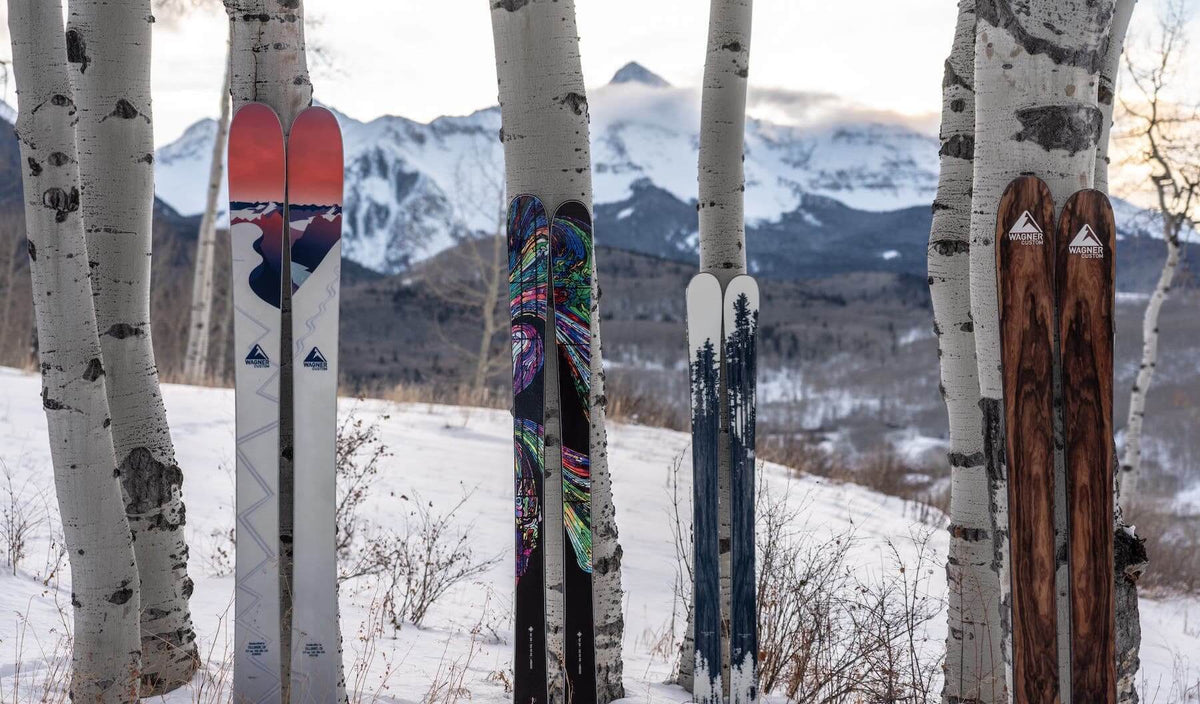
SKI BUYER'S GUIDE, PART 1: SKI LENGTH
Picking skis can be intimidating if you don’t know what to look for.
The problem is that all the elements of ski design (length, width, shape, weight and so on) are interdependent – when you change one element, some other factors have to change too. The goal is to come up with a combination of factors that works for you in the snow and terrain you want to ski. In this series of articles, we take a closer look at how to approach the ski buying process. In this article, we help you answer the common question of "how long should my skis be?"
We'd love to think that ski length could simply be determined by our height, but it's more complicated than that.
Ski length seems like it should be so simple—like shoe size—but in fact it can be one of the most anxiety-inducing part of the ski-building process. After all, if your perfect ski is the wrong size, well, it’s far from perfect.
If you go too short, your skis will feel squirrely at speed and you’ll feel like you’re going over the handlebars every time you pressure the front of your boot. Go too long, and you’ll feel like you need a siren and a bullhorn to get people out of your way because you just can’t turn the darn things.
Don’t worry, we’re here to help. Unlike big-box stores, we don’t have a two-dimensional chart and just a few models that dictate your length. Instead, our ski designers work with you to get everything just right. With custom skis, we can take into account all the dynamics to make sure everything is spot-on—guaranteed. Here’s an overview of the factors we weigh when determining your perfect length.
Height and Weight
It goes without saying that the taller you are, the longer your skis should be. This is because taller people have more leverage to drive the ski, and longer skis help stabilize a higher center of gravity.
Weight plays a part, too, because longer skis better distribute mass—especially in soft snow, in which additional surface area adds float. Heavier skiers also have more power to bend the ski, so a longer length will still feel manageable.
Width and Profile
Length multiplied by width equals the bearing surface. The bearing surface determines how much "float" a ski has in powder.
Usually, width and length increase in tandem. Avid skiers may have a quiver skis in three different waist-widths at three different lengths. (Many skiers go 10 cm longer with their powder ski than they do with their groomer ski, for example.)
There are a number of reasons for this, but the most important is that wider skis are built to float in powder, cut through crud, and plow through mashed potatoes. Length further increases floatation or "bearing surface" (bearing surface = length x width) and stability.
Most wider waisted skis also have a generous amount rocker, which is reverse camber in the tip and tail and sometimes throughout the whole ski. The rocker truncates the effective edge (the edge that engages with the snow), which makes the ski feel shorter, necessitating a longer length than one that is fully cambered. You can skip to Buyer's Guide Part 3: Shape if you can't wait to learn more about rocker and camber.
Finally, wider skis are by nature less quick edge to edge, so the benefits of going shorter often don’t apply (unless you ski tight trees, bumps, and steep couloirs—see Terrain, below).
In contrast, with narrow groomer-oriented skis, a shorter length makes the turn easier to initiate and give the ski more of a responsive feel. Narrow skis aren’t built to float in powder, so they usually have either a slight amount of rocker only in the tip and tail or none at all, which means a longer effective edge. Fully cambered skis “ski longer” than rockered ones. If you’re not sure what camber and rocker are, hold tight or check out Buyer's Guide Part 3: Shape.
Terrain
Where you want to take your skis is also a consideration for length.
Generally speaking, the longer the ski is, the longer the turn it will prefer to make and vice versa. So the terrain you ski plays a role in the length you’ll want.
If your home hill consists of steep or tight terrain (bumps, chutes, trees), you will want a turnier (read: shorter) ski. If you ski fast in powdery bowls, you may want a longer ski that’s floatier and more stable in variable snow.
Essentially, if floatation and speed are high priorities, go longer. If you are skiing above treeline in powder, go wider and maybe longer. Skiing in bumps, on groomers, or in more technical terrain? Consider a slightly shorter ski.
Stiffness
The stiffer a ski is, the more stable it is at speed. This means you can opt for a slightly shorter length that’s more maneuverable without sacrificing stability. Stiff skis at long lengths can feel unwieldy, especially for intermediates and/or lightweights.
Ability Level
Because shorter skis are easier to initiate in turns, we recommend shorter lengths (and narrower widths) for beginners and intermediates.
Sidecut Radius
A ski’s sidecut radius tells you essentially how long its preferred turn is, a number—measured in meters—that is determined by the ski’s shape, or sidecut. (To learn how this number is calculated, click here.) The higher the number, the longer the turn.
Therefore if you’re choosing a ski that has a long sidecut radius (25 to 32-plus meters), you can opt for a slightly shorter length for more maneuverability. If you’re choosing a ski with a short sidecut radius (14 to 18 meters), you may want a slightly longer length for stability.
History
What you’re accustomed to is also important. When you work with a Wagner ski designer, we’ll do a deep dive into your ski history and determine what works best for you. (You should also let us know if you’ve had any injuries, too—as longer skis can put more torque on your knees and hips.)
Finding The Right Ski For You
When you find the right ski length for you, skiing will be easier and more comfortable in all conditions. Ready to learn more about getting the best skis for you and your skiing preferences? Check out these articles from our Ski Buyer’s Guide:

